
Granada & the Alhambra
One of the interesting facets of visiting Spain is the opportunity to experience architecture from the age of the Moors. In 711, troops mostly formed by Moors from northern Africa led the conquest of Hispania.
Muslim rule lasted nearly 800 years here until the fall of Granada to the Christians during the Reconquista in 1492. Jews and Muslims were forced to choose between conversion to Catholicism or expulsion.
To emphasize the contrast in cultures, I first visited the Royal Monastery of Saint Jerome built in the 1500s in lavish Renaissance style in central Granada. Although tame on the outside, every inch of the chapel inside was richly decorated including the soaring golden altarpiece.




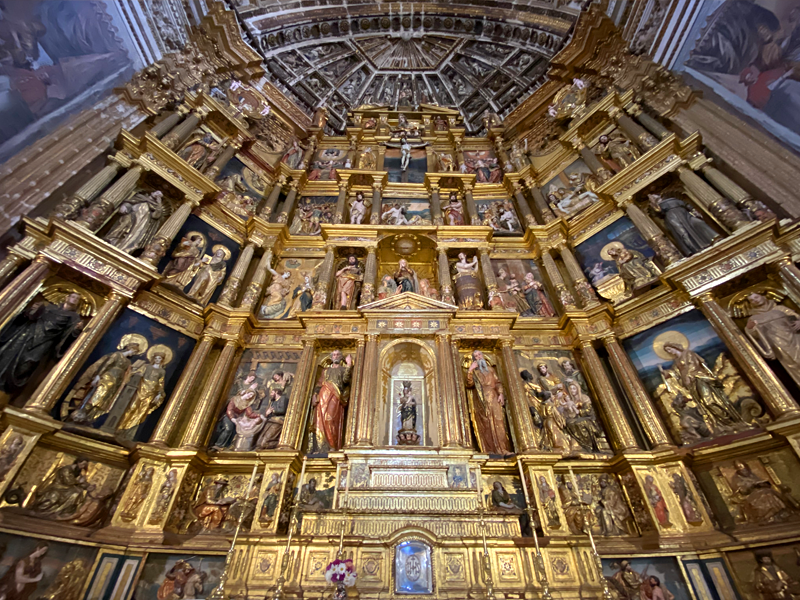

Just down the street, I stepped inside the Basílica de San Juan de Dio constructed in the 1700s. Its wild Baroque interior was completely over the top, nearly to a nauseating degree. I finally looked directly up for some respite from sensory overload and was thankful for the fine dome.

The Basilica’s trophy case featured a wealth of golden goblets. As I looked over the glittering treasure, I was reminded of the scene from Indiana Jones when he had to pick the Holy Grail and wisely chose the humble wooden “cup of a carpenter”. I didn’t see one here…

After my intense immersion in holy relics, it was refreshing to hike through the peaceful woods just beyond Plaza Nueva. Spain is a bit larger than California and, like the state, can be arid in parts and lush in others.

At the top of the hill, I immediately came face-to-face with the immense palace and fortress. This was the famed Alhambra. The complex was begun in 1238 by Muhammad I Ibn al-Ahmar, the first Nasrid emir and founder of the Emirate of Granada.





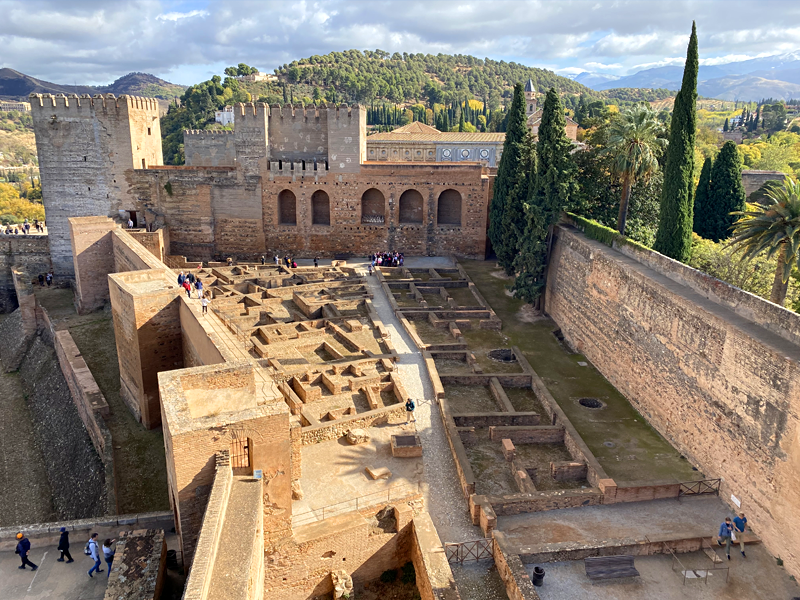
The palace featured a central courtyard with water feature surrounded by richly-decorated halls and rooms. Geometric patterns, vegetal motifs, and Arabic inscriptions swirled around you from every angle. Countless sultans and emirs gazed upon these very walls.
One great contrast from the Christian architecture I’d visited earlier was the absence of depictions of people or animals. The Islamic resistance to the representation of living beings stems from the belief that the creation of living forms is unique to God. Thus the reliance on geometric patterns and Arabic inscriptions rather than angels and saints.
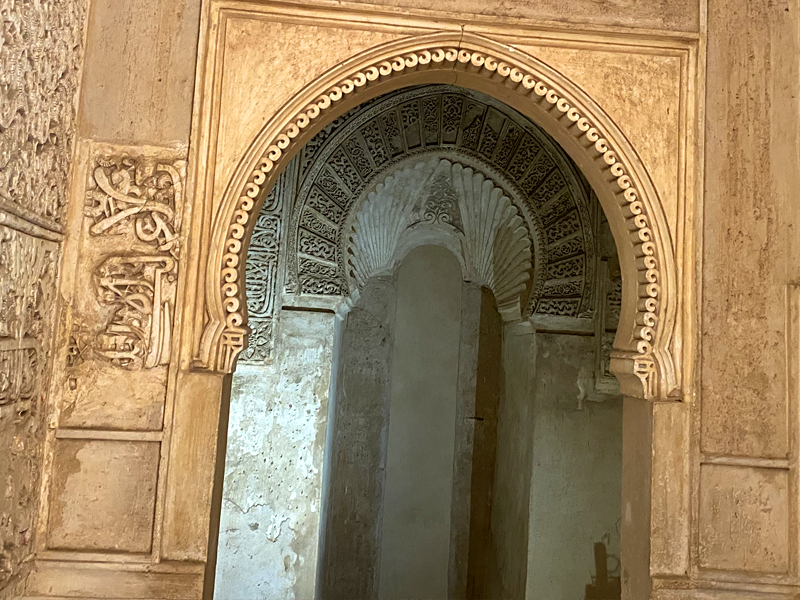
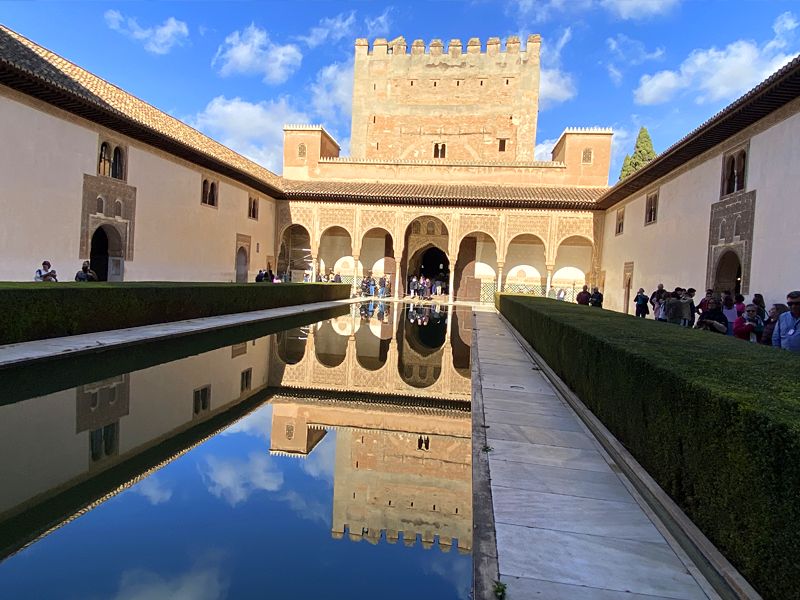




After the conclusion of the Christian Reconquista in 1492, the site became the Royal Court of Ferdinand and Isabella, the first true King and Queen of Spain. Multiple towers and fortifications were built and reinforced to enhance the security of the palace.
Christopher Columbus received royal endorsement for his expedition in this very room, the Hall of Ambassadors, on his way to the new world. It was fascinating to stand here and look up at the ceiling which witnessed the event.

The grounds throughout the palace and fortress were immaculately maintained. Palms mixed with orange trees to shade lush courtyards, fountains and pools full of colorful fish.



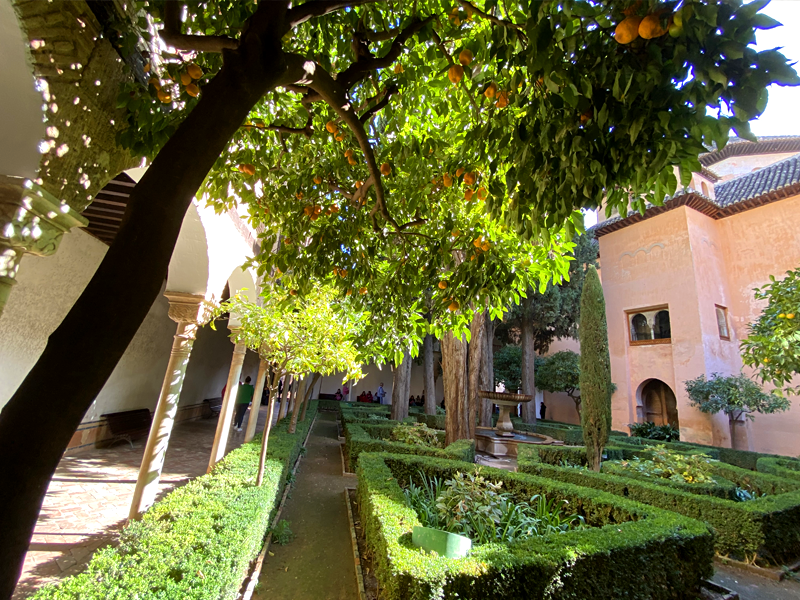


After my tour, I descended back into central Granada to watch the Spanish national team in the World Cup. As I passed restaurants and courtyards, TVs were tuned to the action.

Everyone was happy in the bar where I watched the match. Spain cruised to a 7–0 win against Costa Rica. It was a great way to end my time in Granada. Tomorrow, I pack up and hit the road again.
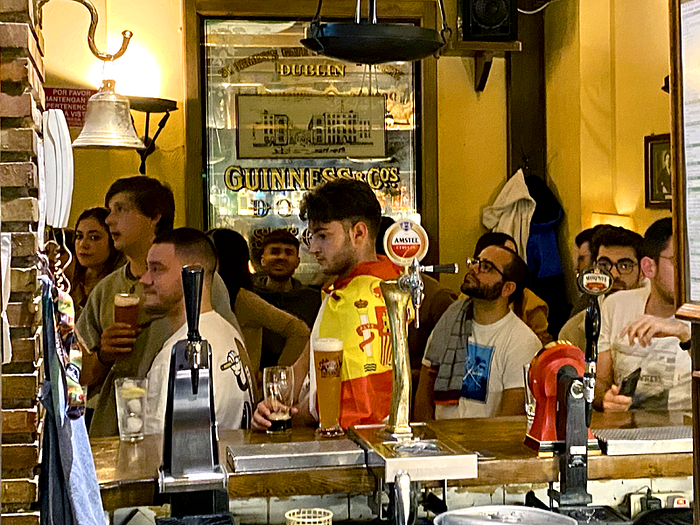
……….
Thanks for coming along on the trip. If you have questions or suggestions, tweet @JasonRMatheson. Missed an entry? Click here.
